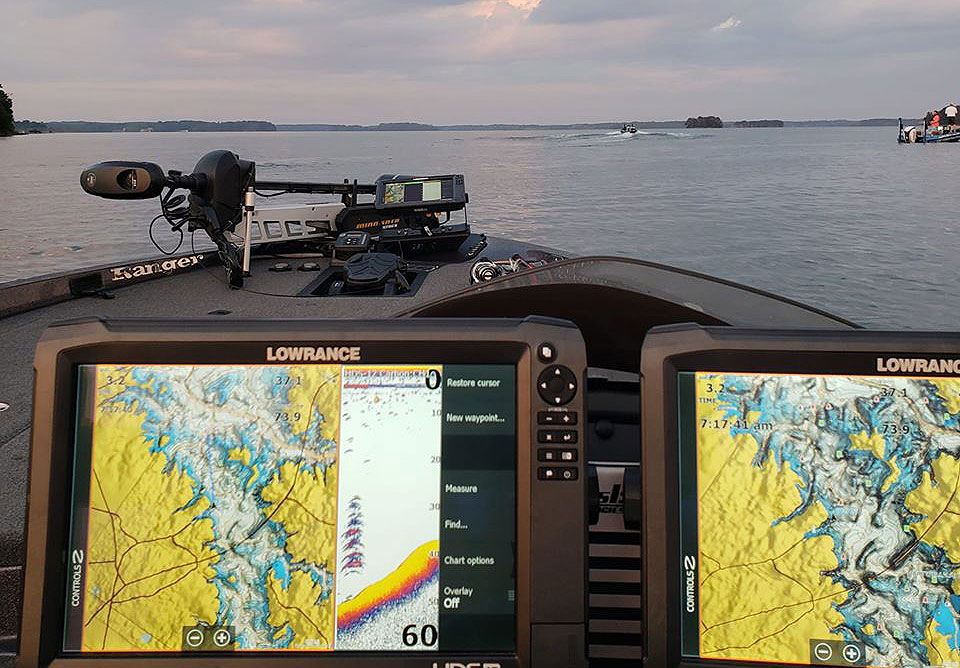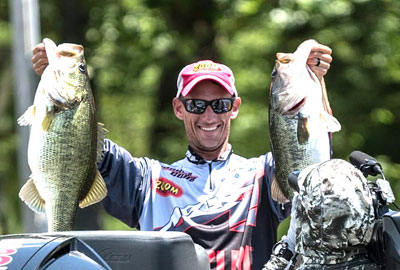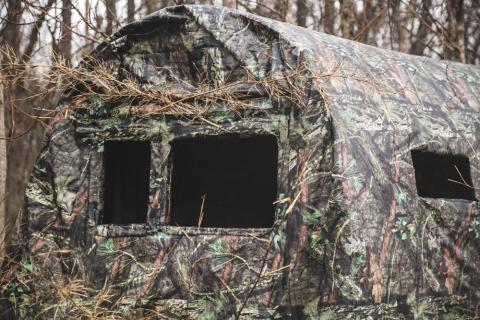provided by John Phillips

Most of the contestants in this year's Bassmaster Classic will know all the key areas that hold bass at this time of the year. For me to win, I've got to find that tiny spot within those key regions where the largest schools of big bass are holding, and where they’ll continue to move in to spawn. I think if I lose this tournament, it will be because I’ve put too much confidence in fishing the area where I’ve caught bass previously and not looking for where the bass move to overnight. That’s why I purposely haven’t pre-fished the Classic. I want to keep an open mind each day and try to move with the bass each day.
Mossy Oak Fishing Pro Kevin VanDam was one of the first anglers not to pre-fish a tournament. Kevin's strengths are identifying subtle changes in the weather and the water and quickly moving to where the bass should be on that day, instead of attempting to catch them where he’s caught them the day before. This trend of not pre-fishing seems to be growing on the Pro circuits. I think if this tournament had been held in early February, then pre-fishing would have been an advantage.
 In the colder weather, the bass tend to gang-up in certain places and hold there for several weeks. However, with the Classic being held in early March, bass will be transitioning from deep to shallow water and will be holding just off that shallow water, waiting for the temperature to get right to move in to bed. If the weather’s warm, the bass may move off those transitional spots and already be on the bed. Another factor impacting the Classic is there’s a community of bass that stay in shallow water most of the year because of the grass. Those fish will be moving closer and closer to the bank to spawn in March.
In the colder weather, the bass tend to gang-up in certain places and hold there for several weeks. However, with the Classic being held in early March, bass will be transitioning from deep to shallow water and will be holding just off that shallow water, waiting for the temperature to get right to move in to bed. If the weather’s warm, the bass may move off those transitional spots and already be on the bed. Another factor impacting the Classic is there’s a community of bass that stay in shallow water most of the year because of the grass. Those fish will be moving closer and closer to the bank to spawn in March.
I think moving-type baits will dominate in this Classic - spinner baits, rattle baits, jerkbaits and swimbaits. My favorite bait is a Yo-Zuri Rattl’n Vibe, a lipless crankbait with rattles in it. Another lure that rattles that I'm sure a lot of fishermen will be using is the bladed jig. Any time we're fishing grass, a bladed jig is always important to success. I believe the most important tool in this tournament will be the new depth finders with down-imaging and side-imaging and some type of LiveSight. The bass will identify some kind of small subtlety where they’ll hold - especially in grass. So, being able to identify that subtle change in the deep grass may be a major factor in finishing well at the 2020 Guntersville Classic. I like my Lowrance side-imaging HDS because it can show me mixtures of different types of deep-water grass, like ditches in the grass and edges. You must have electronics to be able to locate those types of variances in the grass and the bottom. When I'm idling, I rely mostly on the side-imaging feature of my depth finder.
When I'm on the front deck and actually fishing, I depend on the live-imaging that is a forward-imaging kind of sonar - called LiveSight. That Active Imaging feature allows me to see in front of the boat and off to the side of the boat. I can turn on the transducer on my depth finder to see the fish before I get to them. I can also watch my lure coming back to the boat and learn whether or not I have a bass following it. I can see clumps of underwater grass that may be holding bass before I reach them too. I leave my down-imaging feature on all the time. Then I can glance down at it to see if there’s a bass that hasn’t bitten or a hole in the grass that may be a shale bank. My down-imaging will also show me the edge of a grass line that I'm fishing down.
To learn more about Brandon Cobb visit his Facebook page.






























